If you’ve spent time browsing content online, you’ve probably seen cookie consent notices on the pages you visit. While some cookies save your information to improve the user experience, others follow you across multiple websites and track your behavior. Therefore, you might be wondering how to remove tracking cookies in your browser.
Fortunately, it’s easy to delete cookies in all major browsers, including Google Chrome, Safari, and Mozilla Firefox. You can even remove them from your mobile device to regain control over your online privacy.
In today’s guide, we’ll explain how tracking cookies work and whether they pose a threat to your privacy. Then, we’ll show you how to remove them in your browser. Let’s jump in!
Check Out Our Video Guide to Removing Tracking Cookies in Your Browser:
What Are Tracking Cookies?
You may already be familiar with browser cookies. These data snippets collect information about your behavior on a website, including the pages you visit and the items you purchase.
Since most websites ask for consent when collecting your information, you’ve probably seen cookie notices when visiting different pages:

Additionally, cookies may save login credentials so you’ll have a more seamless browsing experience when you return to the site. It’s important to note that they’re different from cached data – these are website files stored in your browser to speed up loading times on future visits.
By contrast, tracking cookies monitor your behavior across multiple websites. When you land on a site, the cookie will start recording your actions and continue tracking your activities once you’ve moved on to other sites. This data is often shared between multiple services, including advertising networks.
Are Tracking Cookies Spyware?
If you’re concerned about website security, you might worry that tracking cookies are spyware or other malicious software (malware). However, there are some key differences between these cookies and spyware.
In simple terms, spyware hides on your computer and collects information about your activities, such as passwords, banking details, and other sensitive data. It’s typically used by malicious actors who want to steal your identity or sell your data to other nefarious parties.
Although there are many ways to get a spyware infection on your device, it usually comes from phishing scams, malicious links within emails or websites, or hidden files within regular downloads.
Tracking cookies do not have malicious intent. They don’t collect passwords or other sensitive data and sell it to third-party organizations. Plus, they’re not hidden on your device and you can easily disable them.
How Do Tracking Cookies Work?
By now, you should have a general understanding of tracking cookies. However, you might be wondering how exactly they collect information.
When you visit a site that uses tracking cookies, your browser will send a request to the server, asking to load the page’s content. The server responds by sending the page’s data to your browser, which includes an “identifier”. This is a unique string of numbers and letters representing your device.
When you visit another page, it can detect the identifier stored within your browser. It will then serve you targeted advertisements related to the site that generated the tracking cookie in your browser.
What Information Do Tracking Cookies Collect?
Many advertising networks create tracking cookies as part of their digital marketing strategies. Essentially, they want to learn more about your online activities so that they can show you ads that appeal to your interests.
To do this, tracking cookies will collect information about various activities, including:
- Browsing history
- Location
- Past purchases
- Searches
- Scrolling speed
- Clicks
- Mouse hovers
If you appear interested in particular content, tracking cookies will notice this. Then, you might start seeing more ads for products and services related to your interests.
Are Tracking Cookies Dangerous?
Tracking cookies aren’t inherently dangerous. However, many users are concerned about their use and the potential to compromise online privacy.
Tracking cookies can serve you with more relevant advertisements. If you’ve been looking for laptops online, you might suddenly start seeing ads to help you with your purchase.
However, you may not wish for advertising networks to collect information about your behavior and interests. In fact, up to 78 percent of American users actively sought ways to increase their online privacy in 2021.
You might feel a bit concerned if you don’t know which platforms are tracking you, how much information they’re recording, and who they might share it with. That’s why disabling and deleting tracking cookies could be an important step toward gaining online anonymity.
Can Tracking Cookies Steal Passwords?
Unlike spyware and other malware, tracking cookies are not designed to steal passwords and other sensitive data. However, they can be hijacked.
In a cookie hijacking attack (also known as session fixation and session hijacking attacks), hackers gain access to all cookie information in your browsing session. This can even include your passwords and banking details, enabling malicious actors to steal your money and break into your online accounts:

In some cases, hackers may even change your login details and other credentials so that you can no longer access them.
Unfortunately, this type of attack is not isolated to tracking cookies. Hackers can theoretically exploit any kind of cookie within your browser.
Therefore, the best way to keep your device safe is to avoid clicking on suspicious email links, as they could be phishing attempts. It’s also a good idea to install high-quality antivirus software on your device, along with WordPress security plugins to safeguard your website.
Why Should You Remove Tracking Cookies?
There are a few different reasons why you may want to remove tracking cookies in your browser. Besides protecting your online privacy and reducing the risk of cookie hijacking, there are a few other things to consider:
- Speed optimization. Cookies store data in your browser, taking up storage space and potentially harming its performance over time. This is especially true if you have hundreds of saved cookies on your device. Therefore, deleting them can speed up your browser and help you access content more quickly.
- The removal of personally identifiable information. When using online forms on the websites you visit, you may enter personal data such as your full name, address, and login details. Since this information can be used to steal your identity, you’ll want to ensure that it’s not in the hands of unknown third parties.
- Common fixes for browser errors. Occasionally, cookies will store outdated data from previous sessions. They can then trigger browser errors, especially in Google Chrome. In fact, one of the first troubleshooting steps for browser and WordPress errors is usually deleting cookies and cached data so that you have a “clean slate.”
If you’ve decided to go ahead and delete tracking cookies, you’re in luck! In the next section, we’ll walk you through the entire process.
How To Remove Tracking Cookies in Your Browser
Fortunately, it’s quick and easy to remove tracking cookies in all major browsers, including Google Chrome. Our walkthrough will show you how to do this in Windows 10 and 11, along with Android mobile devices. These steps are also applicable to MacOS and iOS.
Following this tutorial will also enable you to clear your browser cache at the same time.
Google Chrome
If you’re using Google Chrome on a laptop or desktop device, you’ll need to click on the three dots in the top-right corner of the browser window. Then, select More tools > Clear browsing data:
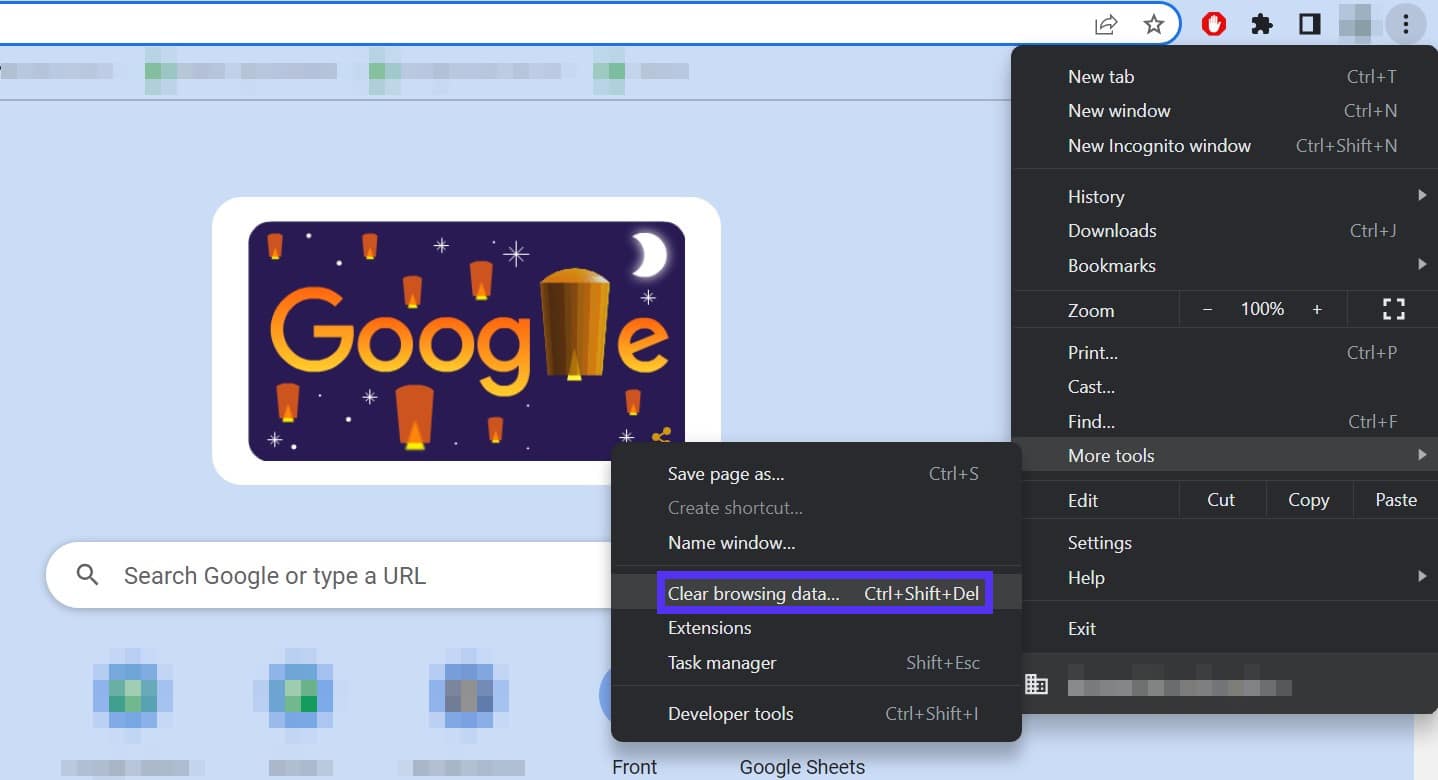
You should now see a pop-up window with different options for clearing data from your Google account. You’ll need to select Cookies and other site data and then click on Clear data:
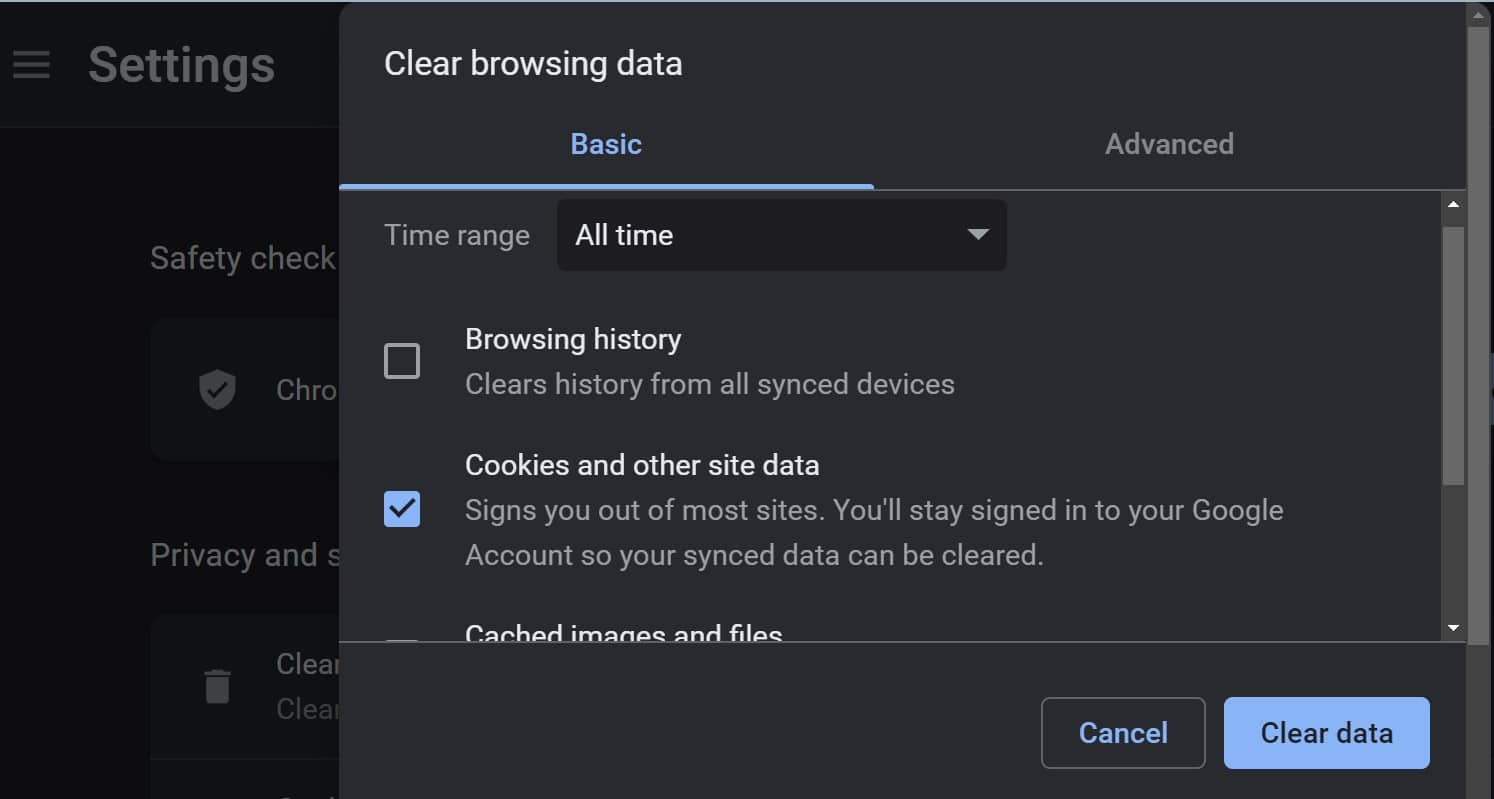
If you’d also like to block tracking cookies in future sessions, head to Settings > Privacy and security > Cookies and other site data. Now, click on the toggle bar next to Block third-party cookies:
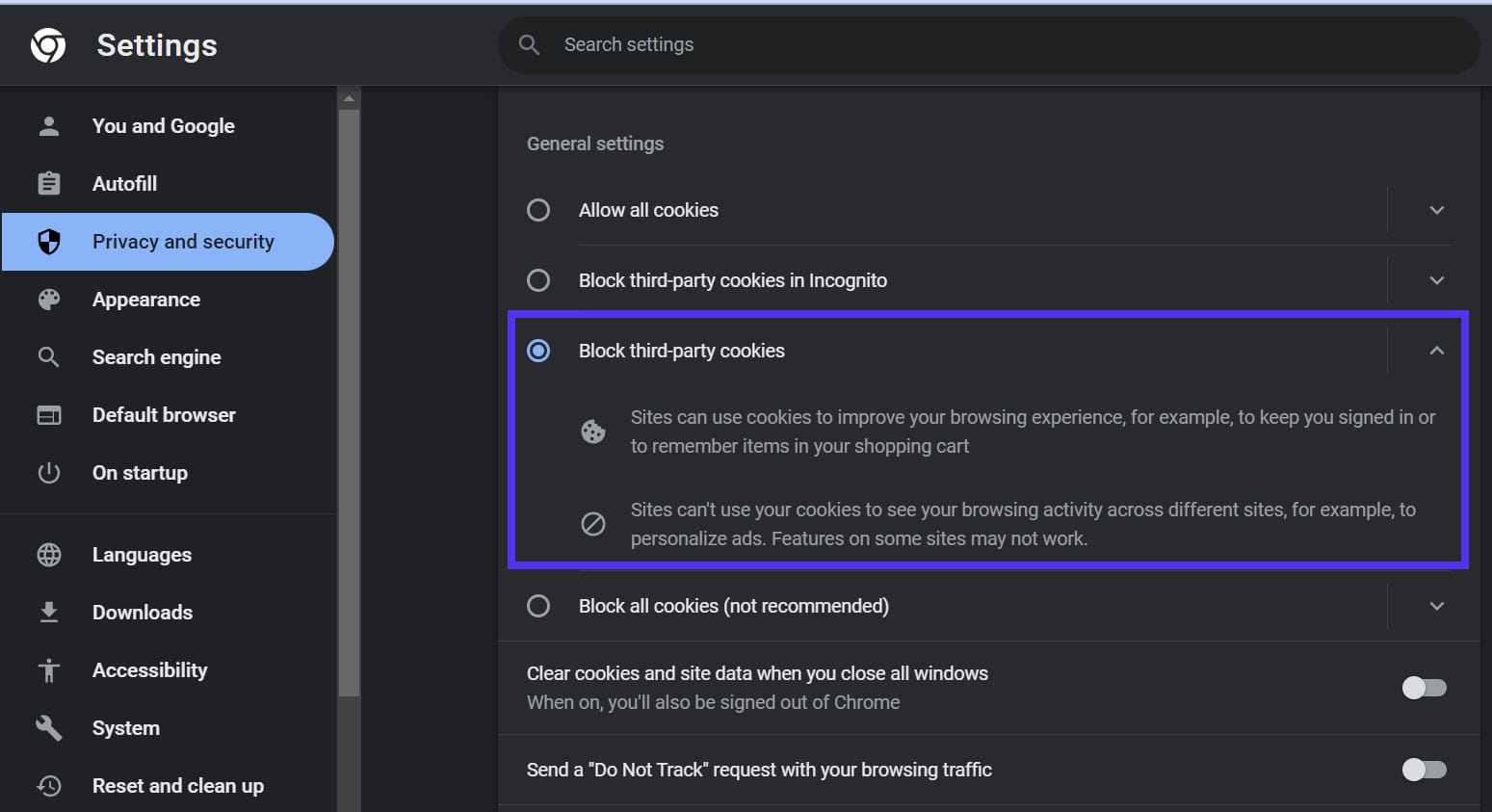
Note that this setting won’t affect browser cookies such as saved passwords. It’s specifically designed to prevent tracking cookies.
If you’re using Google Chrome on a mobile device, you can remove tracking cookies by tapping on More > Settings:

Then, select Privacy and security > Clear browsing data:

Finally, check the box next to Cookies and site data, then hit Clear data at the bottom of your screen:
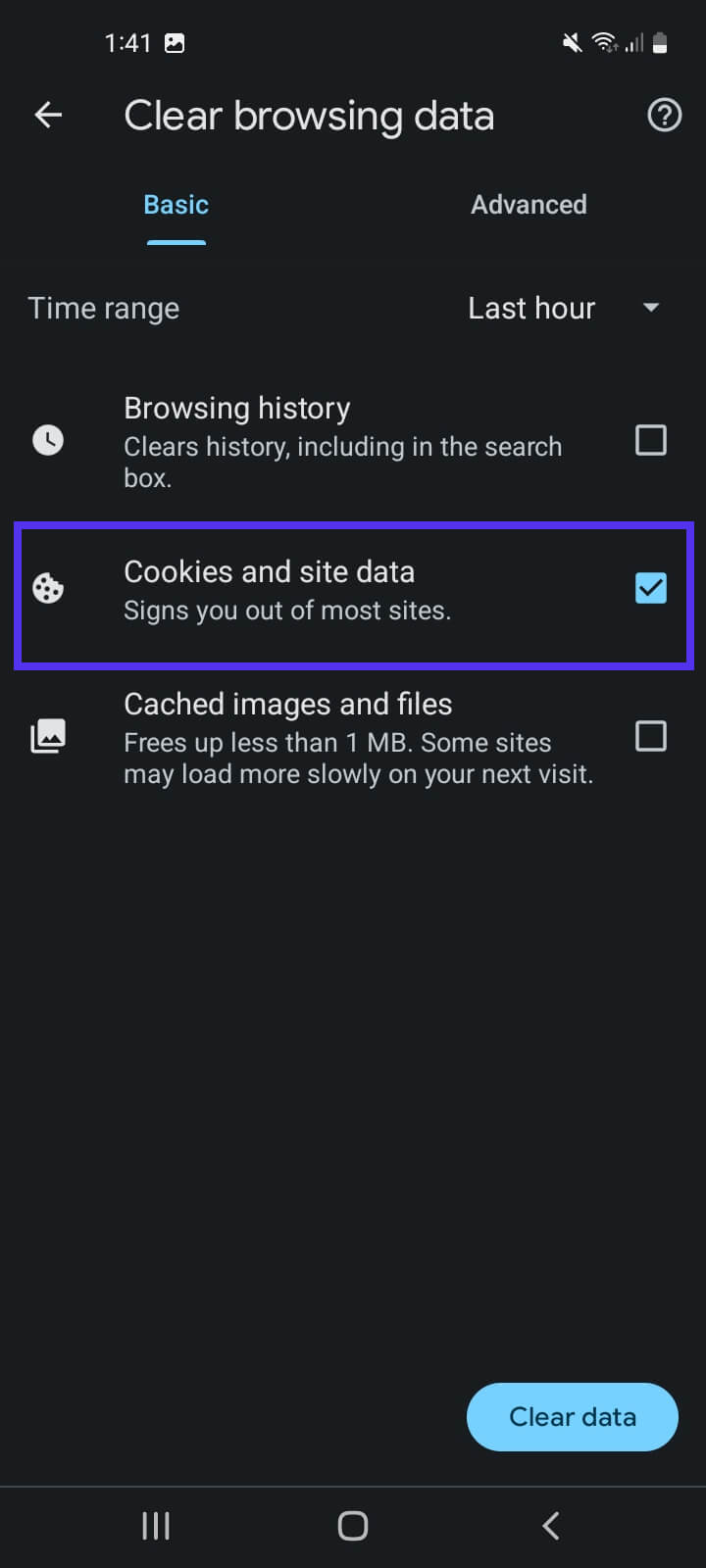
It’s that easy! We recommend following these steps periodically if you want to remove tracking cookies from your device(s).
Safari
If you’re an iOS or MacOS user, you’re probably working with Safari. This is also a privacy-conscious browser, so it blocks tracking cookies by default.
However, if you want to check this, click on Safari > Settings in the top left of the browser window:
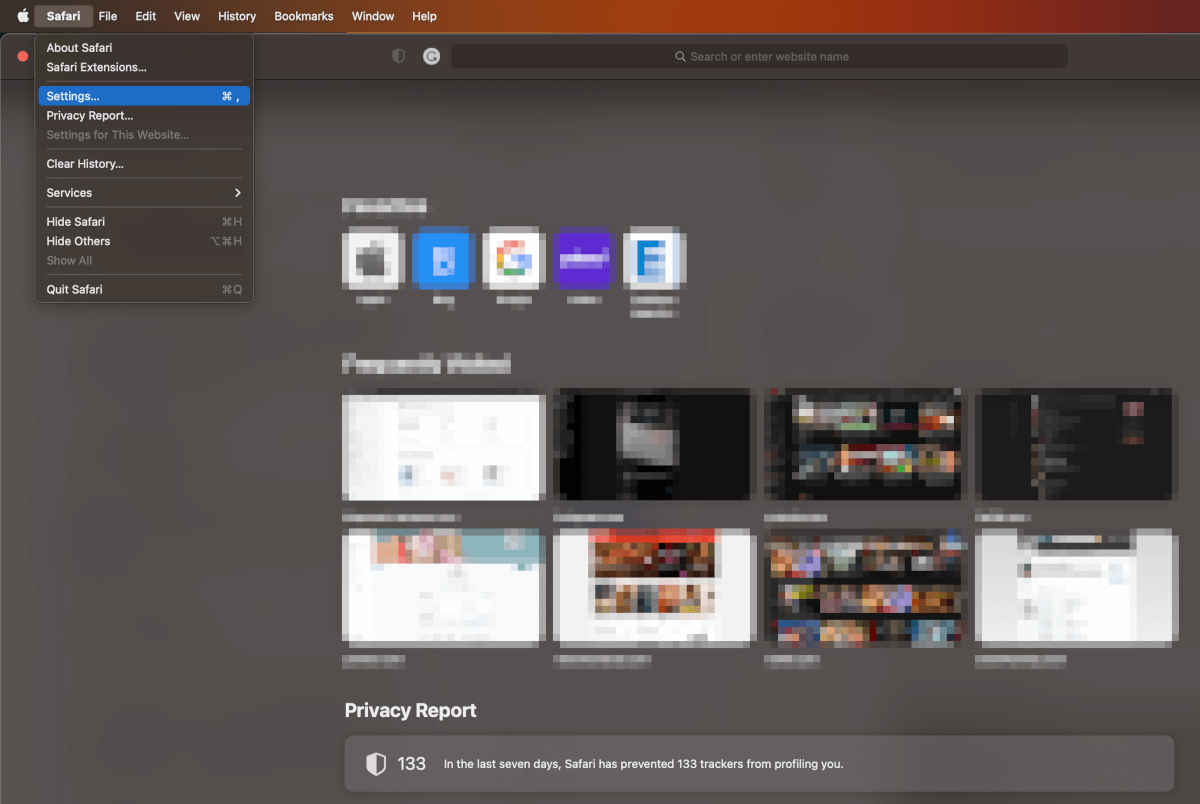
Next, switch to the Privacy tab. You’ll want to ensure that the box next to Prevent cross-site tracking is checked. Then, click on Manage website data:

You’ll now see a list of all the saved cookies in your browser from different websites. You can delete them as needed or click on Remove All, followed by Done:
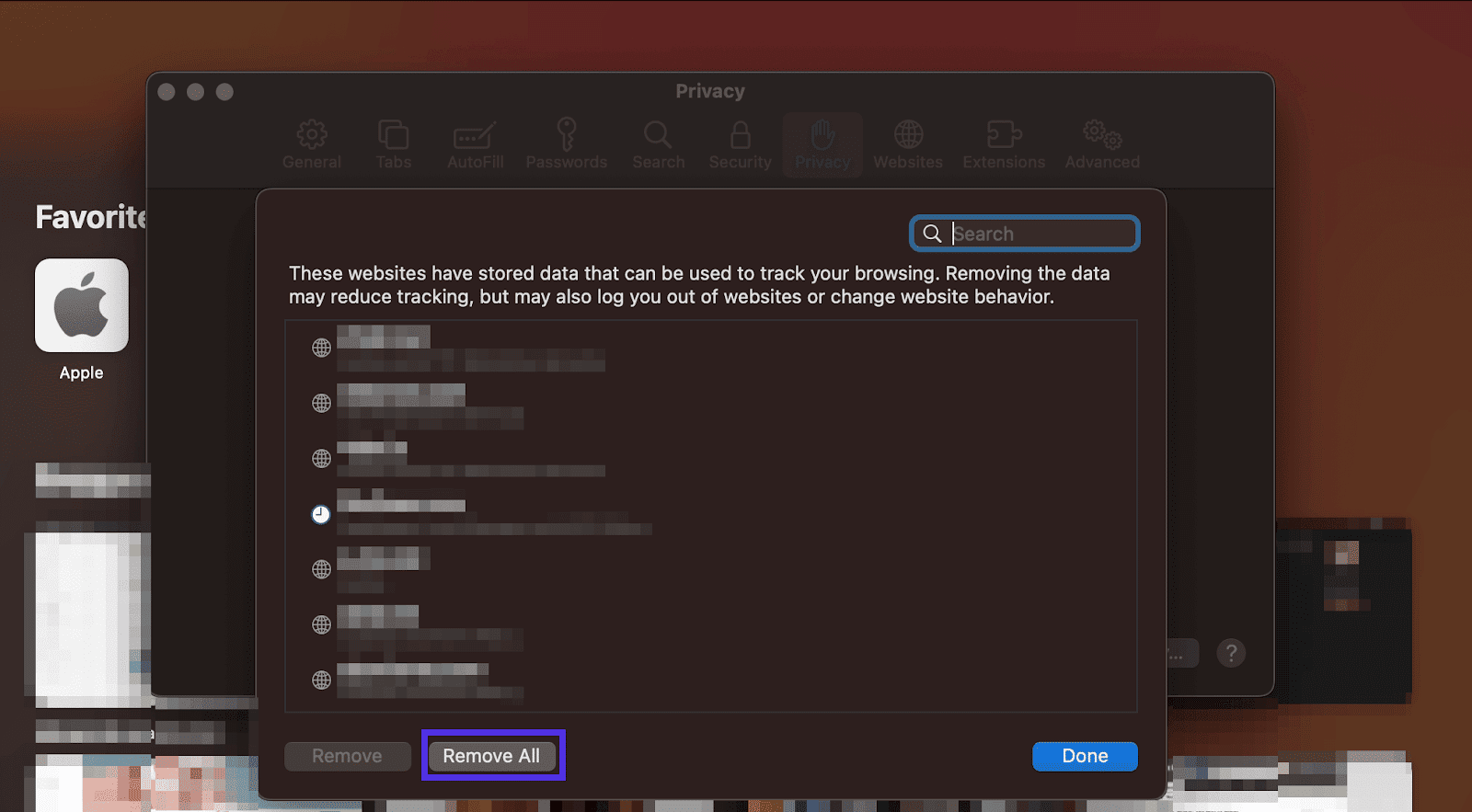
Like the web browser, the mobile Safari browser also blocks tracking cookies by default. If you want to delete them on iOS devices, hit Settings > Safari > Clear History and Website Data.
Mozilla Firefox
If you use Mozilla Firefox, you shouldn’t have any problems removing tracking cookies. By default, the browser blocks cross-site tracking cookies in all windows.
However, if you’re worried that a tracking cookie has made its way into your browser, you can easily remove it. Simply click on the three lines in the top right corner of the browser window and select Settings:

Click on Privacy & Security, then scroll down to the Cookies and Site Data section:

To delete tracking cookies, click on Clear Data. Now, make sure the box next to Cookies and Site Data is ticked and hit Clear at the bottom of the window:
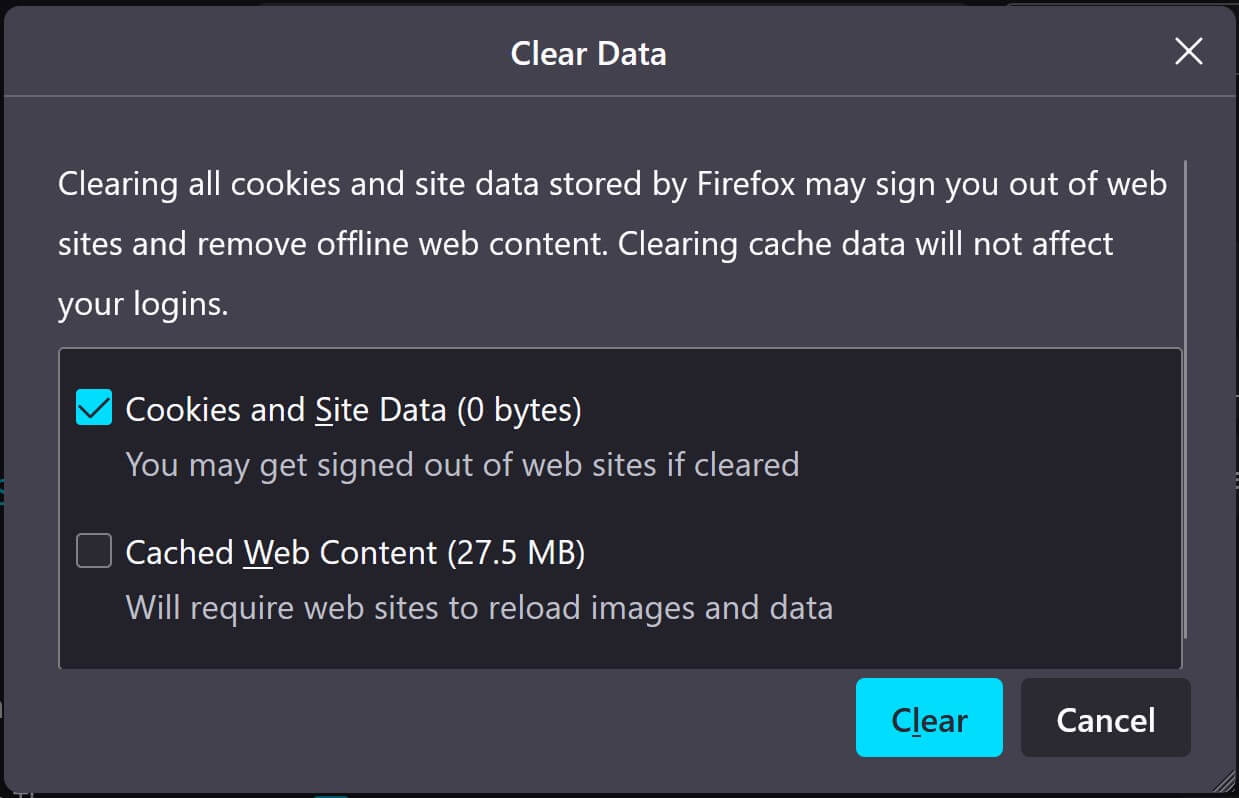
On mobile devices, you can delete cookies by tapping on the three dots in the bottom right of your screen. Now, select Settings:
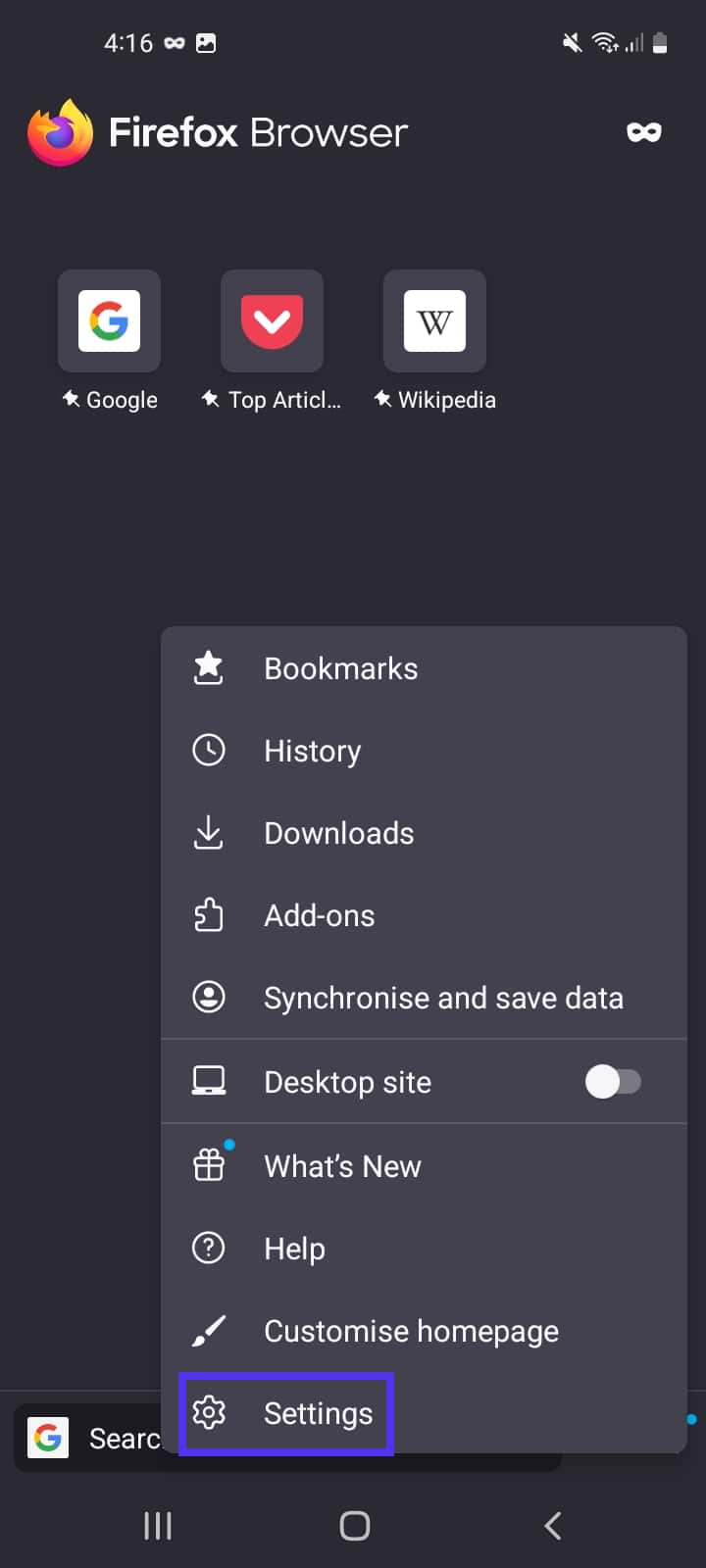
Scroll down to Privacy and security and tap Delete browsing data. Make sure that you’ve ticked the box next to Cookies and hit Delete browsing data at the bottom of the screen:
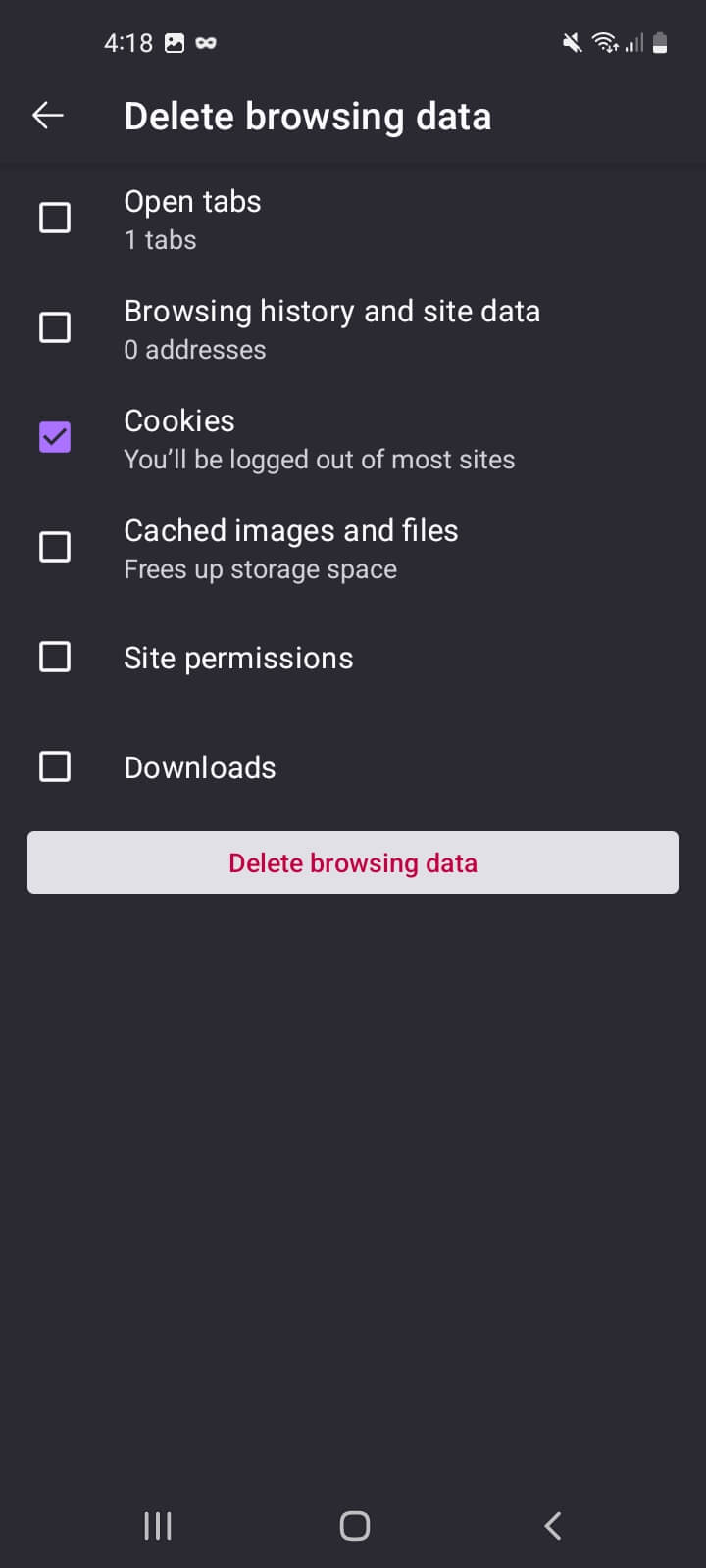
Note that Firefox also offers enhanced tracking protection on mobile devices. This means the browser will work to prevent third-party sites from monitoring your actions online.
Microsoft Edge
Microsoft Edge also makes it easy to remove tracking cookies. First, select the three dots at the top of the browser window and scroll down to the bottom of the settings menu. Then, click on Settings:

Under Cookies and site permissions in the left-hand menu, select Manage and delete cookies and site data:

First, you might want to prevent third-party sites from saving tracking cookies in your browser. To do so, click on the toggle slider next to Block third-party cookies:
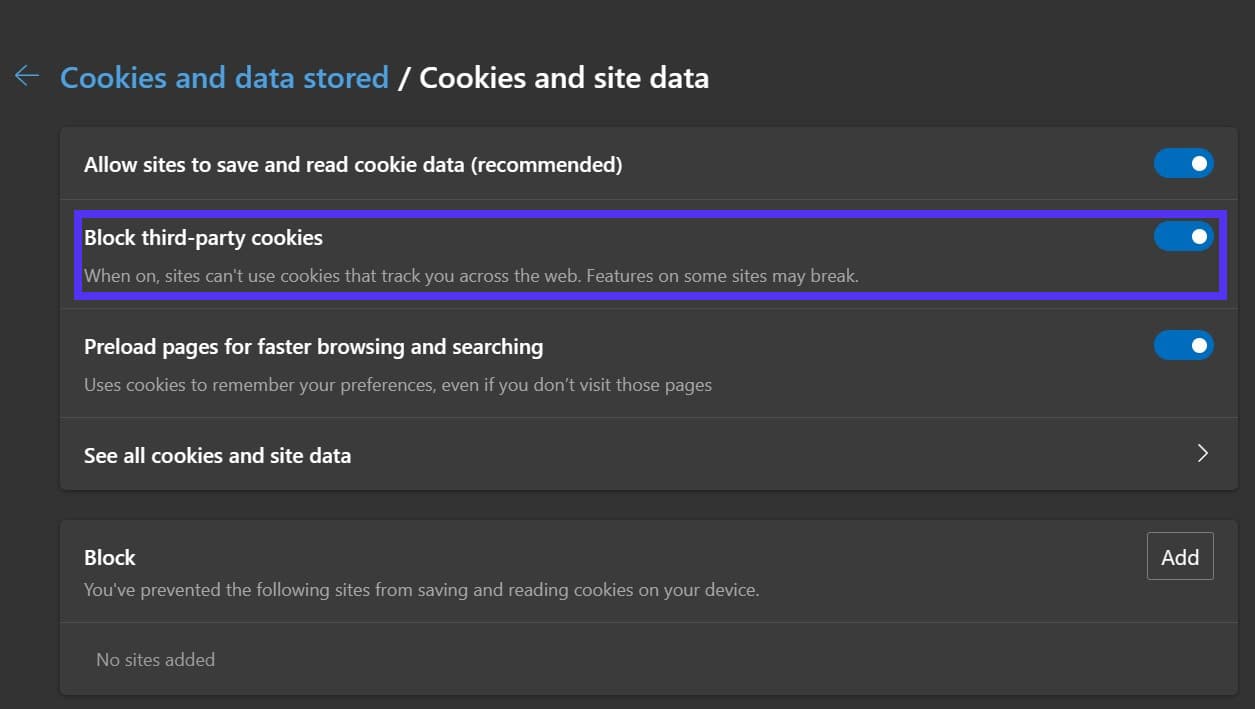
Now, select See all cookies and site data to view any tracking cookies and stored data within the browser:
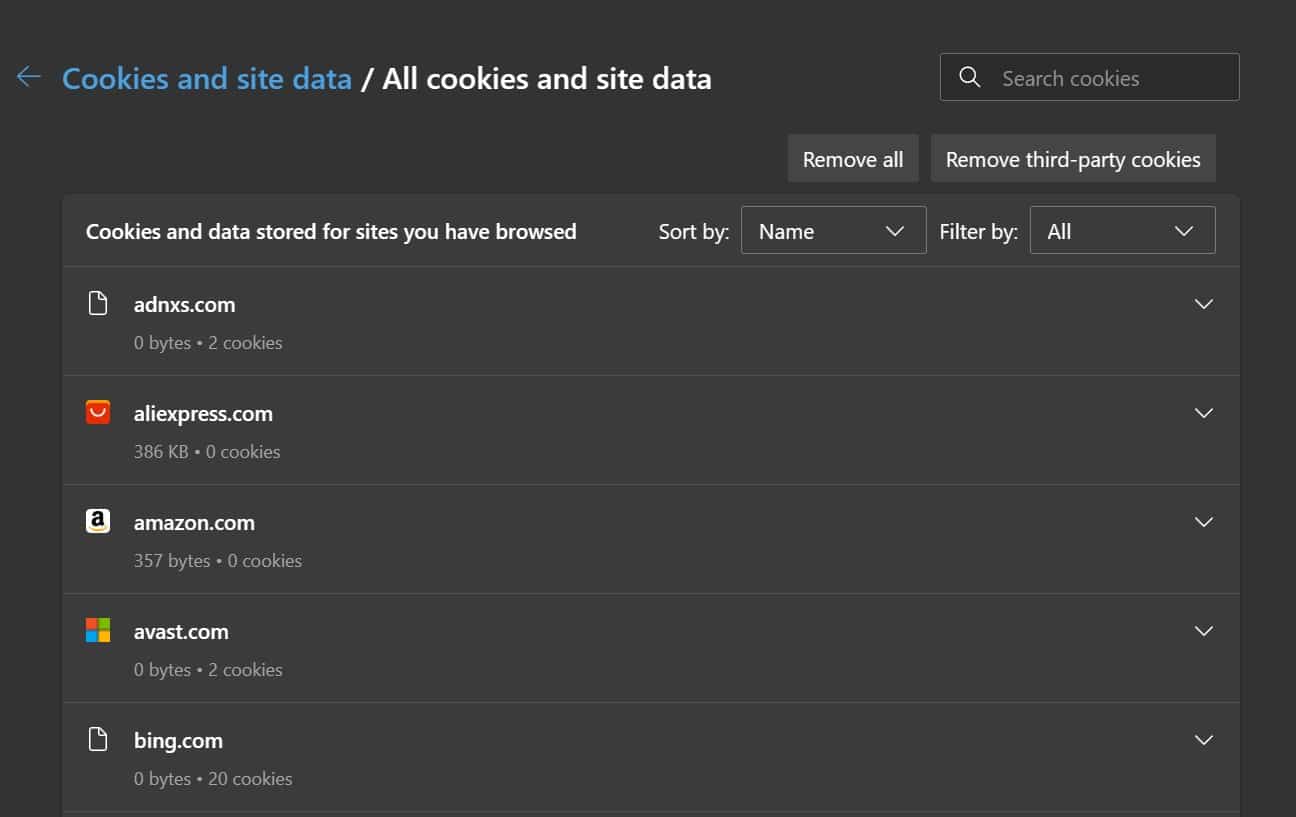
If you click on Remove all, Edge will delete all cookies from the browser. Alternatively, the Remove third-party cookies option will only target tracking cookies.
The process for mobile devices is pretty much the same. You’ll first need to tap on the three dots at the bottom of your screen, followed by Settings:

Next, select Privacy and security, followed by Clear browsing data:

Finally, make sure the box for Cookies and site data is ticked and tap Clear data:
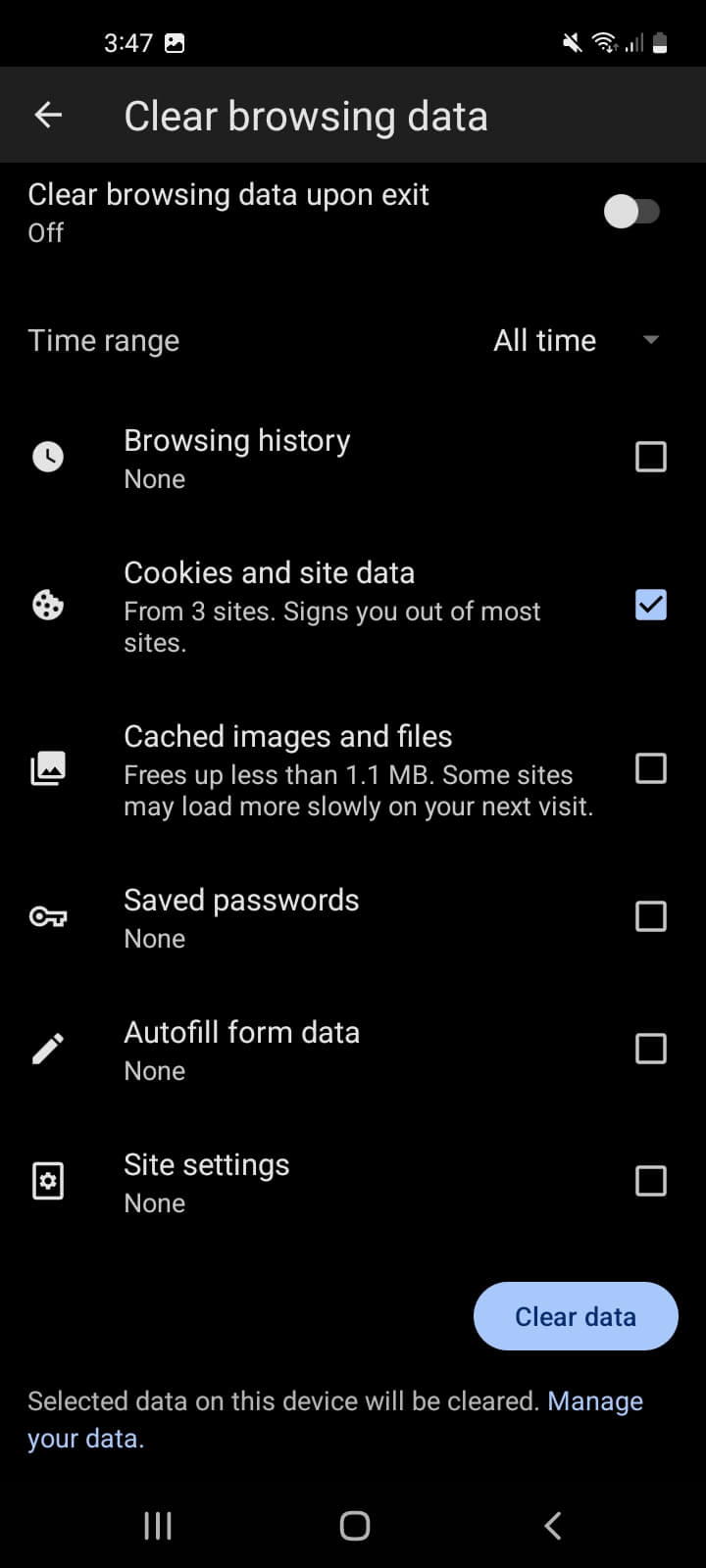
Note that you can also set a time range for clearing cookies at the top of the screen. If you’d like to remove all cookies from your device, you’ll need to select All time.
How Often Should You Delete Tracking Cookies?
If you’re using a public device (such as a library computer), we recommend deleting all cookies at the end of each session. That way, you won’t be leaving your personal information on a computer accessed by many other people.
If you use a private computer or mobile device, you may still want to consider removing tracking cookies on a regular basis. You can use your discretion here, but once per month is a good baseline.
Is Google Phasing Out Tracking Cookies?
You may have already heard about the possibility of a cookieless future. Many browsers, including Google Chrome, are starting to phase out third-party cookies to further protect online user privacy.
Google originally planned to disable tracking cookies by 2022. However, this deadline has since been pushed to Q3 of 2024. This is because Google is first focusing on perfecting its Privacy Sandbox project, which will implement new privacy techniques within the Chrome browser.
Furthermore, Google has taken a harder stance in European countries due to EU policies such as the General Data Protection Regulation (GDPR). The search engine was fined €150 million by the French data protection agency in 2022 because its cookie notice banners were deemed confusing and difficult to use.
Consequently, Google rolled out a new, simple button that enables French users to reject all cookies with a single click. The search engine also plans to implement this feature across the entire EU, Switzerland, and the United Kingdom.
Summary
Tracking cookies are typically used by third-party sites to collect information about your online behavior and send you targeted advertisements. However, they can feel like an invasion of privacy.
Fortunately, it’s easy to remove tracking cookies in all major browsers, including Google Chrome, Safari, Firefox, and Microsoft Edge. Plus, many browsers let you disable third-party cookies altogether or block them by default.
If online privacy is a top concern, you’ll want to choose a reliable hosting company for your own website. At Kinsta, we offer a variety of security features, including an enterprise-level firewall, DDoS protection, complete isolation technology, and a dedicated malware team. Check out our secure WordPress hosting plans today!

